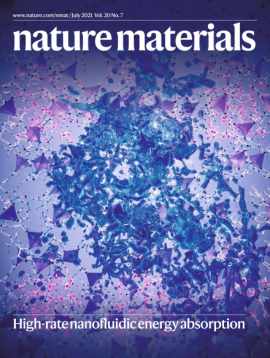Quantum tunneling rotor as a sensitive atomistic probe of guests in a metal-organic framework
Abstract
Quantum tunneling rotors in a zeolitic imidazolate framework ZIF-8 can provide insights into local gas adsorption sites and local dynamics of porous structure, which are inaccessible to standard physisorption or x-ray diffraction sensitive primarily to long-range order. Using in situ high-resolution inelastic neutron scattering at 3 K, we follow the evolution of methyl tunneling with respect to the number of dosed gas molecules. While nitrogen adsorption decreases the energy of the tunneling peak, and ultimately hinders it completely (0.33 meV to zero), argon substantially increases the energy to 0.42 meV. Ab initio calculations of the rotational barrier of ZIF-8 show an exception to the reported adsorption sites hierarchy, resulting in anomalous adsorption behavior and linker dynamics at subatmospheric pressure. The findings reveal quantum tunneling rotors in metal-organic frameworks as a sensitive atomistic probe of local physicochemical phenomena.

